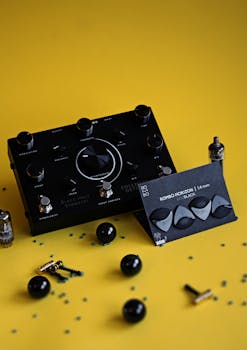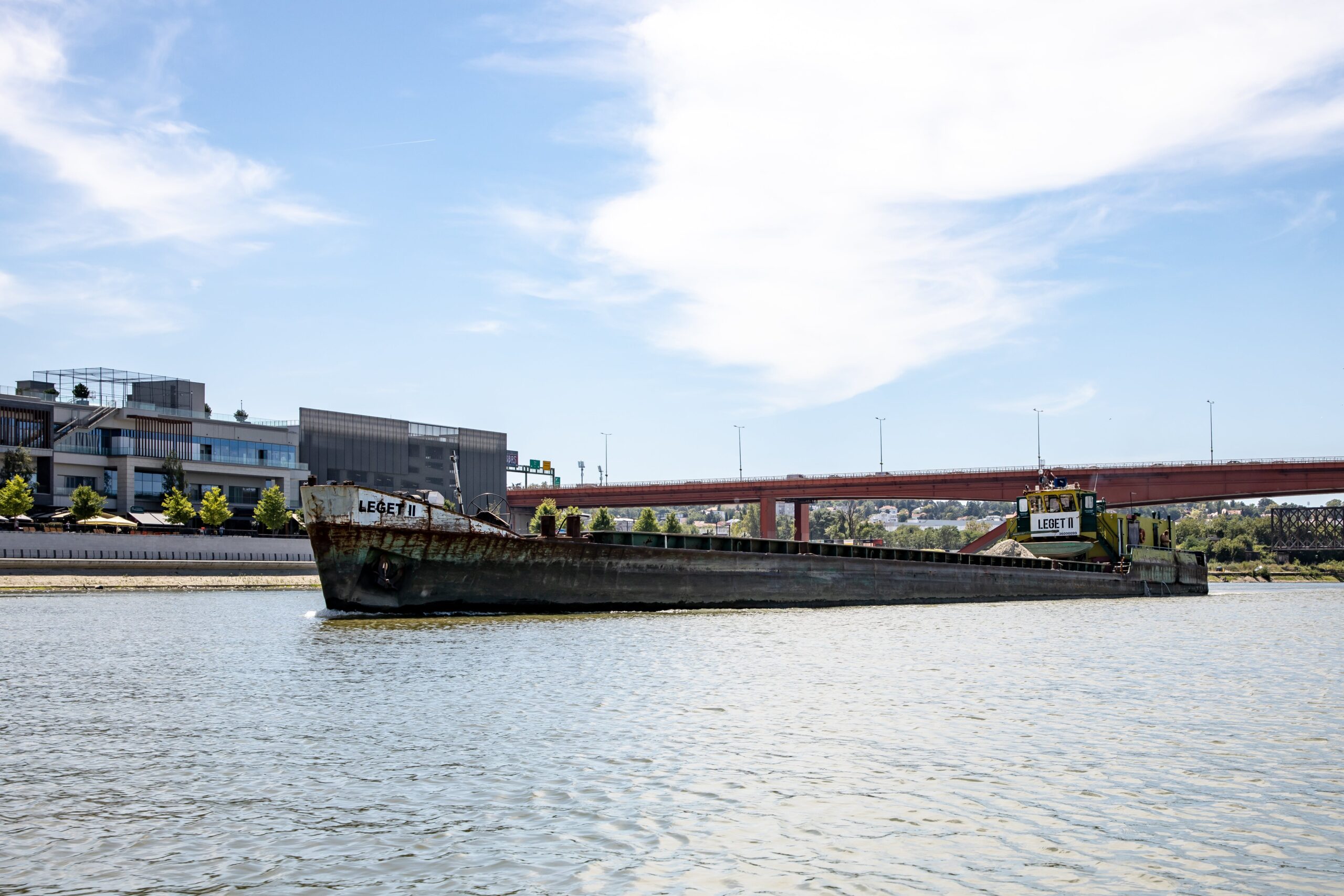Introduction
Brief Overview of the Importance of Moisture Control in Transportation
In the bustling world of logistics and transportation, one unseen enemy often wreaks havoc on products during their journey from factory to retail – moisture. From causing mold and mildew growth to triggering container rain or sweat, moisture can significantly impact the quality and integrity of goods during transit. It’s not just about aesthetics or product usability; moisture damage can lead to substantial financial losses, result in customer dissatisfaction, and even negatively influence a brand’s reputation. Therefore, the significance of effective moisture control strategies in product transportation cannot be overstated.
Introduction to Micro-Pak Distribution USA and Their Unique Selling Proposition
Enter Micro-Pak Distribution USA, the leading distributor of anti-microbial and anti-moisture products, offering a robust line of defense against moisture and its associated challenges. What sets Micro-Pak apart from the competition is not just their innovative range of products designed to tackle moisture at its core, but their unwavering commitment to safety and sustainability. By leveraging cutting-edge technology and a deep understanding of the moisture problem, Micro-Pak is on a mission to ensure that your products arrive in optimal condition, free from the harmful and unsightly effects of mold and mildew. The journey to a moisture-free transportation experience begins here.

Understanding the Impact of Moisture on Product Transportation
When it comes to transporting goods, the elephant in the room is often moisture. The invisible yet formidable foe can wreak havoc on cargo, causing damage that can be both financially and environmentally costly.
How Moisture Can Damage Goods During Transit
As goods travel across different climatic zones, they are subjected to fluctuations in temperature and humidity. These changes can lead to the formation of condensation, commonly referred to as container rain or container sweat. This condensation can accumulate and drip onto the cargo, leading to direct damage. From discoloration and degradation of materials to the development of mold and mildew, the effects of moisture damage on goods are wide-ranging and detrimental.
It’s not just the physical damage that’s a concern. Mold and mildew can produce unpleasant odors, making products unsellable, or even worse, pose health risks to consumers. The stakes are even higher for delicate and moisture-sensitive items such as electronics, artworks, clothing, and food products.
The Financial Implications of Moisture Damage
The financial toll of moisture damage during transit is staggering. It’s estimated that moisture-related damages discard approximately 10% of all containerized goods. This results in millions of dollars lost each year due to the wastage of damaged goods and the associated costs of replacement and delay in deliveries.
But the financial implications don’t stop at the direct costs. There’s also the matter of damage to a brand’s reputation, loss of customer trust, and potential legal liabilities – intangible costs that can outstrip the immediate financial losses.
The Environmental Impact of Moisture-Related Damages
The environmental implications of moisture damage are often overlooked but are equally concerning. The wastage of damaged goods contributes to the growing problem of global waste. Additionally, the energy and resources invested in the production, packaging, and transportation of these goods are wasted, exacerbating the environmental footprint of the supply chain.
Further, the disposal of moisture-damaged goods, particularly electronics and other hazardous materials, can pose significant environmental challenges. If not disposed of correctly, these can lead to harmful toxins being released into the environment.
In a world increasingly conscious of sustainability, the environmental cost of moisture damage during transit cannot be ignored. It is not just about the financial bottom line; it’s also about the commitment to environmental stewardship and sustainable practices.
In the battle against moisture damage, knowledge is power. By understanding the impact of moisture on product transportation, manufacturers and retailers can take proactive steps to mitigate these risks and ensure the safe and efficient delivery of their goods. This is where innovative moisture control solutions, such as those offered by Micro-Pak, come into play.
Common Moisture Challenges in Transportation
Riding the waves of international freight, consumer goods face a plethora of challenges, some of which are as fickle and unpredictable as the weather. Among these, moisture-induced issues such as container rain and container sweat can wreak havoc on the quality of goods in transit.
Unraveling the Mysteries of Container Rain and Container Sweat
In the realm of shipping and logistics, the terms ‘container rain’ and ‘container sweat’ describe the adverse effects of moisture on cargo. Despite their innocuous names, they are far from harmless.
Container rain occurs when warm air within the container rises and comes into contact with the colder container ceiling. This temperature difference can cause condensation, which then ‘rains’ down onto the cargo, potentially causing significant damage.
On the other hand, container sweat happens when the container walls become colder than the dew point of the air inside the container, leading to condensation forming on the walls. Both of these phenomena can result in substantial damage to the cargo, leading to financial losses and decreased customer satisfaction.
The Climatic Dance: Temperature Fluctuations and Moisture Damage
The repercussions of temperature fluctuations during transit are often underestimated. As vessels traverse different climatic zones, the changing temperatures can lead to increased humidity and condensation within the container, thus resulting in container sweat or rain.
This is particularly problematic for certain types of cargo, such as textiles, electronics, and food items, which are highly susceptible to moisture damage. The adverse effects can range from mildew growth and discoloration to complete degradation of the product.
The Silent Threat: Relative Humidity and Cargo Quality
The quality of goods in transit can also be compromised by the relative humidity within the container. Relative humidity refers to the amount of moisture in the air compared to the maximum amount the air could hold at a particular temperature.
An average shipment can easily experience fluctuating relative humidity between 40% and 90%. While these fluctuations may not always seem relevant, they can significantly affect the cargo’s quality due to the closed ecosystem of the container. For instance, a temperature of 11.5 °C with a relative humidity of 91% inside the container can lead to a dew point of 10.1 °C. This means that if the outside temperature falls below 9 °C, condensation will occur, negatively affecting the cargo quality.
Understanding these common moisture challenges is the first step in establishing effective moisture control solutions for safe product transportation. In the battle against container rain, container sweat, and the adverse effects of relative humidity, knowledge truly is power.
Current Moisture Control Solutions in the Market
When it comes to protecting your products during transportation, an array of moisture control solutions are currently available in the market. Each offering has its own merits and limitations, and understanding these can help you make an informed decision on the best-fit solution for your specific needs.
Overview of Desiccant Bags, Blankets, Pads, and Dehumidifiers
One common method of controlling moisture is through the use of desiccant bags. These bags are filled with moisture-absorbing materials, such as silica gel or calcium chloride, and are strategically placed within the container to absorb any excess moisture. Similarly, moisture-absorbent blankets and pads are designed to line the walls of a shipping container, providing a physical barrier that absorbs condensation before it can reach the cargo.
In addition to these passive solutions, active solutions like dehumidifiers are also used to maintain a low humidity level within the shipping container. Dehumidifiers work by drawing in air, removing the moisture, and then releasing the drier air back into the container.
Discussion on the Limitations of These Solutions
While these solutions can be effective in certain circumstances, they have their limitations. For instance, desiccant bags, blankets, and pads can only absorb a finite amount of moisture. Once they become saturated, they are no longer functional, leaving the cargo unprotected. Furthermore, these solutions may marginally reduce the dew-point-threshold, but they can’t completely eliminate the risk of condensation.
Similarly, dehumidifiers can only work efficiently if the container is sealed properly. Any leaks or if the container doors are frequently opened, the dehumidifier’s effectiveness may be significantly reduced. It’s also worth noting that these solutions require regular maintenance and monitoring to ensure their effectiveness, adding to the operational cost.
Introduction to Improving Isolation or Ventilation as a Moisture Control Method
Another method used to control moisture in shipping containers is through improving isolation or ventilation. This involves using insulating materials to reduce the temperature fluctuations within the container, thus reducing the likelihood of condensation. Ventilation, on the other hand, allows for better air circulation, helping to reduce the buildup of humid air inside the container.
While isolation and ventilation can be effective, they also have their own limitations. For instance, improving isolation may not always be practical due to space limitations within the container. Similarly, while ventilation can help reduce humidity, it can also potentially expose the cargo to outside elements.
In conclusion, while these current moisture control solutions can help mitigate moisture-related damages, they are not foolproof. As such, it is crucial to consider a comprehensive approach that not only includes these traditional methods but also incorporates innovative solutions like real-time cargo monitoring for a more effective moisture control strategy.

Micro-Pak’s Innovative Moisture Control Solutions
No longer will you have to worry about mold and mildew affecting the quality of your products during transportation. Micro-Pak Distribution USA provides a unique range of anti-microbial and anti-moisture products that are designed to safeguard your goods throughout the transit process.
Detailed Overview of Micro-Pak’s Range of Anti-Microbial and Anti-Moisture Products
Micro-Pak’s innovative solutions are designed to protect a broad range of consumer goods, from clothing and footwear to leather goods and more. Their product line includes antimicrobial stickers and PE sheets that control moisture levels within packaging, creating an environment inhospitable to mold and mildew. For box-packed items, especially footwear, the Micro-Pak stickers are a perfect choice. In contrast, the PE Sheets work best for polybag packed items.
Furthermore, Micro-Pak’s Dri Clay and Container Desiccants offer advanced moisture control solutions. Dri Clay is a 100% natural desiccant that shields packaged products from moisture damage. The Container Desiccants, on the other hand, are designed to remove moisture from the air inside containers, effectively preventing “container rain” – a common cause of mold growth during transportation.
How These Products Prevent Mold and Mildew from Factory to Retail
Micro-Pak’s products work by controlling the moisture levels within packaging. By creating an environment inhospitable for mold and mildew, these products significantly reduce the risk of product damage. This prevention method ensures that the products are kept in optimal condition from the factory to retail, limiting the potential for customer dissatisfaction due to faulty or damaged goods.
Highlighting the Effectiveness of Micro-Pak’s Solutions in Ensuring Products Arrive in Optimal Condition
Micro-Pak’s commitment to safety and sustainability is what sets them apart from the competition. Their moisture control solutions are not only effective but also safe for the environment. The effectiveness of their products is demonstrated by their ability to protect goods in varying transit conditions, ensuring that products reach their consumers in the best possible condition.
In a world where mold and mildew are the enemies of consumer goods, Micro-Pak’s innovative moisture control solutions offer a robust defense, ensuring safe product transportation every time.

The Future of Moisture Control: Real-Time Cargo Monitoring
The dawn of the digital age has introduced astonishing advancements that reshape the way we handle moisture control in transportation. One of these game-changing technologies is real-time condition monitoring of cargo in transit. It goes beyond the traditional moisture control methods to provide a more proactive and precise solution to the challenge of product transportation in varying environmental conditions.
Introduction to Real-Time Condition Monitoring of Cargo in Transit
Real-time condition monitoring harnesses the power of the Internet of Things (IoT) to track and monitor the environmental conditions of your goods throughout the supply chain journey. This innovative technology equips your cargo with smart sensors that constantly measure and record vital data such as temperature, humidity, and moisture levels. This information is then transmitted in real-time, providing a timely and accurate overview of the conditions within your shipment.
The Role of IoT Enabled Sensors and Data Analytics in Moisture Control
IoT-enabled sensors play a significant role in maintaining the quality of your goods during transit. They continuously gather data, allowing you to monitor the environmental conditions inside your containers and make necessary adjustments to prevent moisture buildup. Coupled with advanced data analytics, these sensors give you a comprehensive understanding of the moisture stress your cargo is exposed to during each transit leg.
Through data analytics, you can identify routes and seasons that pose a higher risk of container rain and condensation. This insight allows you to adapt your product packaging and desiccant use accordingly, ensuring optimal protection against moisture damage.
Highlighting the Benefits of Real-Time Cargo Monitoring in Preventing Moisture Damage
The benefits of real-time cargo monitoring extend beyond mere data collection. It provides you with actionable insights that significantly reduce the risk of moisture damage. Real-time alerts can inform you immediately when condensation is most likely occurring, giving you the opportunity to make timely decisions such as repositioning the container, inspecting the cargo, or proactively informing the client.
Moreover, these real-time updates help you distinguish between defective products upon shipment and those that experienced in-transit damages, enabling you to address the root cause of the product damage effectively.
In essence, the future of moisture control lies in real-time cargo monitoring. This innovative solution elevates your moisture control strategies, ensuring your products remain in top-notch condition throughout their journey. Not only does this guarantee customer satisfaction, but it also contributes to more sustainable and efficient product transportation.
Conclusion
Tackling the menace of moisture damage in product transportation is a daunting task. It involves the careful orchestration of various strategies, including the use of desiccants and dehumidifiers and improving isolation and ventilation. However, as we have seen, these traditional methods can only achieve so much. The real game-changer in the field of moisture control is technology. By leveraging the power of IoT enabled sensors and data analytics, we can now monitor the condition of cargo in real-time, promptly addressing any moisture-related issues before they escalate.
The role of companies like Micro-Pak Distribution USA cannot be overstated in this fight against moisture damage. Their range of anti-microbial and anti-moisture products are revolutionizing the way we deal with mold and mildew, from the factory to retail. Be it their antimicrobial stickers or their PE sheets, these products are designed to control moisture levels within packaging, creating an unfavorable environment for mold and mildew to thrive. They serve as a testament to the company’s commitment to safety, sustainability, and innovation.
As we move forward, the importance of effective moisture control solutions in transportation cannot be overstated. With climate change and increasing global trade, the risks associated with moisture damage are only set to rise. However, with the advancements in technology and the innovative moisture control solutions provided by companies like Micro-Pak, we are well-equipped to handle these challenges.
In conclusion, while the battle against moisture damage may be tough, it is certainly not impossible to win. With the right tools, strategies, and partners, we can ensure that our products reach their destinations in the best possible condition. And remember, in the fight against moisture damage, prevention is always better than cure. So, let’s invest in effective moisture control solutions today for safer product transportation tomorrow.


Recent Comments